
New Managing Director for Bellona Norway
The Board of the Bellona Foundation has appointed former Minister of Climate and the Environment Sveinung Rotevatn as Managing Director of Bellona No...
News

Publish date: August 27, 2014
News
GRAND ISLE, Louisiana – It’s Thursday August 3, the third day of the 2014 shrimping season, and the offices and boatyards of Dean Blanchard Seafood, Inc – once supplier of 11 percent of America’s shrimp – are, in the words of its owner, “a graveyard.”
Blanchard himself, an avuncular if unvarnished guy who’s literally just trying to stay afloat, sits in the boatyard office’s air conditioning that battles the 40 degree temperatures pelting this now forgotten island 170 kilometers south of New Orleans, trading gossip on his iPhone with other shrimp distributors.
“Y’all didn’t get nothing either, accept for tar, gook and some of those deformed creepy-crawlies, huh?” he says into the phone. “Sounds about right for around here, too.”
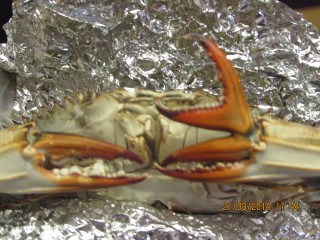
His nephew, Ryan Penick – one of the few workers around in the yard because he’s part of the family – motions out the window at two empty refrigeration unit 18-wheeler trailers awaiting something, anything, to carry away.
“On a day like this, this early in the season, there should be at least another 15 or 20 of those waiting, and this place should be a madhouse of people running around,” he told Bellona. “But there’s nothing going on, and it’s been that way for a long time – too long.”
The “creepy-crawlies” Blanchard referred to on the phone are the ever-rising rash of horrifically mutated shrimp, crabs and other sea life covered with oozing growths and extra limbs, shrimp and crabs lacking eyes and eye sockets, and fish of all manner swollen with apparent tumors.
As more and more fisheries fail, shrimp boat nets have been dragging these freaks of nature to the the surface since the 2011 fishing season, said Blanchard, after BP’s Deepwater Horizon rig blowout, which gushed 4.9 million barrels of crude into the Gulf of Mexico after the vessel exploded and sank on April 20, 2010, killing 11.
“We ain’t never seen anything like those shrimp and crabs before the spill,” said Penick. “This kind of stuff was news to us all.”
Penick said the mutated shrimp can be easily spotted in the sorting process, but said that plenty actually make it through seafood distributors to market. The malformations would not be noticeable in most US supermarket seafood chests because the heads and outer shells are most often discarded. But that presents no guarantee that whatever carcinogens caused the horrific malformations are not making it into the human food supply.
A small group grease-stained, skinny shrimpers wait for Blanchard to finish his call to collect pay for their measly hauls. They chat among themselves about how their catches won’t even pay for the diesel fuel that got them to the shrimp beds 60 to 70 kilometers to the east – near the Macondo well, the source of the BP leak. And, of course, they’ll have to subtract the deformed crabs from their weights.
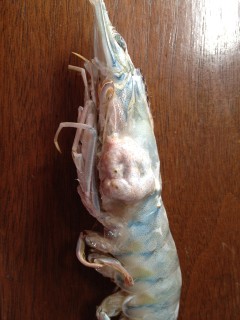
Those creatures will be added to Blanchard’s growing collection of sea oddities that he keeps in the office freezer and photographs for the lawyers. His photo collection, which he shared with Bellona, spans from 2012 when mutations first became obvious through to the 2014 fishing season.
Once in a while, says Penick, a group of unidentified scientists will drop by and take a few specimens.
“They don’t say where they’ve come from, and we know better by now than to ask,” he told Bellona. “They don’t show any credentials or leave any business cards – and we never hear from them again.”
Were the ‘creepy-crawlies’ come from
That’s likely because the chemicals sprayed to put BP’s oil out of sight are, according to leading environmental scientists, a recipe for creating aliens.
Dr. Riki Ott, a toxicologist, marine biologist and Exxon Valdez survivor predicted in numerous media the mutagenic effects of the joint decision by BP and the US Government to inundate the Deepwater Horizon spill with 1.85 million gallons of the controversial oil dispersant Corexit – much of it from underwater, a circumstance never tested with the chemical.
Corexit – which, according to a study published in the journal Environmental Pollution, is 52 times more toxic than crude alone – is known to be mutagenic, is also showing up in the form of the seafood deformities, Ott has said.
Shrimp, for example, have a life-cycle short enough that three to four generations have existed since BP’s disaster began, giving the chemicals time to enter the genome.
Such being the case, Ott said, “It should be no surprise that solvents are also notoriously toxic to people, something the medical community has long known.”
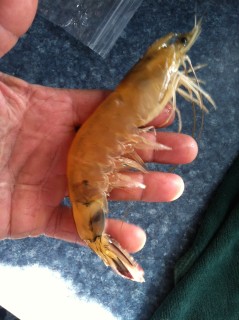
Dr Jim Cowan, of Louisiana State University’s Department of Oceanography and Coastal Sciences told Al Jazeera that he thinks chemicals called polycyclic aromatic hydrocarbons (PAHs), released from BP’s submerged oil, are the likely culprit in lesions and sores on sea life he’s been studying since as early as November of 2010.
The mutated fish he found came from “a wide spatial distribution that is spatially coordinated with oil from the Deepwater Horizon, both surface oil and subsurface oil,” he said. “A lot of the oil that impacted Louisiana was also in subsurface plumes, and we think there is a lot of it remaining on the seafloor.”
Studies by the University of South Florida in 2012 found that some 20 percent of more than 20 species of fish examined in spots hit by oil turned up with lesions, said Al Jazeera. Later studies showed a dramatic increase of 50 percent of fish from oil-affected areas turning up with lesions.
According to Blanchard, who’s not known in these parts for sugarcoating things, “It’s all part of the damn BP and government conspiracy to cover up what they did out here. They killed our business and they sure as hell don’t want to pay for it.”
Erosion of a community business
In Blanchard’s case, what got killed is a 30-year-old shrimp clearinghouse that he started when he was 18-years-old with one worker aside from himself.
Over the years, the fecund shrimp in the beds off Grand Isle – whose hotels and beachfront condos now turn hollow window sockets and parched, empty parking lots toward Louisiana Highway One – Dean Blanchard Seafood ballooned into one of the Gulf’s mega-businesses and local employers.
In 2009, and the years previous, according to his records, Blachard was hauling in and processing for sale 14 million pounds (6.3 million kilograms) of shrimp a year.
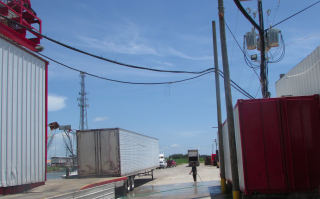
Because the federal government closed down a two-month-old fishing season after the BP blowout in 2010, 2011’s shrimp crop was even more robust as fishermen cashed in on leftovers they weren’t allowed to trawl the previous year – a statistic BP and the Federal government touted as a banner of Gulf recovery.
They weren’t around with the trumpets the following year when Blanchard’s distribution haul plummeted to about 3 million pounds. Nor the following year, when it fell to about 2 million pounds.
He predicts this could be his last year in business.
“It took about five years for the Exxon Valdez spill to kill fishing off in Prince Island Sound, and that’s pretty much where we’re heading,” he said. “I’m trying to keep it standing, trying to keep a good face on it, but it ain’t gonna last – it’s probably adios.”
LSU’s Cowan drew a similar corollary to the Exxon Valdez in terms of the shrimp mutations being observed.
“The fish are being exposed to PAHs, and
I was able to find several references that list the same symptoms in fish after the Exxon Valdez spill, as well as other lab experiments,” said Cowan. “There was also a paper published by some LSU scientists that PAH exposure has effects on the genome.”
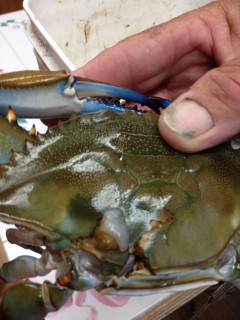
The birth of a ghost town
What the downturn in shrimp quality and quantity has reflected in terms of jobs, said Blanchard, breaks down to something like this: Prior to the BP spill, he employed some 6000 people and took loads from 1400 boats owned by his company. He now employs about 300 people and has contracts with about 350 privately-owned boats and runs 30 of his own.
Where earlier Blanchard’s was the largest distributor for mid-sized, short haul vessels manned by local crew, he has now had to turn to larger out-of-state commercial shrimp boats whose sea time averages 25-40 days, and who largely fish the coast of Texas, west of the megaphone of Corexit and crude poisoning that metastasized in a northeasterly direction, pulling oxygen out of shrimping water, according to studies done by the University of Georgia several weeks after the spill.
Grand Isle’s population is only 1400 – which in 2010 put most residents in proximity to the economic stimulation Dean Blanchard Seafood, Inc provided the community – a migration of 6000 workers, Blanchard said, is “just a devastating loss BP will never be able to compensate.”
“That’s why you see all those clapboard hotels and restaurants when you’re driving down here,” he said. “There’s nobody around to see, nobody to visit and who wants to go swimming in tar?”
Indeed, even as the spill began to encroach on Grand Isle when Bellona visited it in 2010, the community was bustling with vacationers, lured by BP’s promises that oil would not hit the shores, though not immune to the putrefaction of burning oil and Corexit drifting in from the sea.
So people have moved away, Blanchard said, “They’re too sick to stay – with all kind of respiratory problems, people couldn’t breathe or find work.”
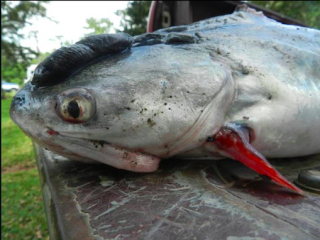
What the numbers show
In monetary terms, the loss in revenue to Dean Blanchard Seafood seem less devastating on paper than his account would suggest. The company’s annual revenues have diminished by half, from some $50 million to $25 million.
But Blanchard said he’s only able to buoy those revenues by charging several more times per pound of shrimp than he did in 2009.
“The shrimp industry isn’t in the dollars but in the pounds,” he said. “Back in 2009 and 2010 I could charge $8 per pound wholesale, now I gotta charge $20 to $30,” representing a drastically and still downwardly spiraling volume of shrimp being harvested in the Gulf.
In 2010, when BP devised a strategy of carpet-bombing Gulf communities with easily achieved money handouts based on potential revenue loss, Blanchard received three payments equaling $1.1 million. Now that the one-off bonanza has ended, it’s done nothing to cover his $3 million a year in operating costs.
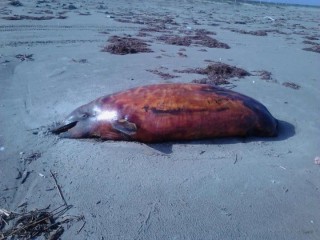
He’s joined a federal compensation suit and is going after BP for $111 million in losses. He doesn’t expect a favorable outcome.
Individual shrimpers faring no better
Mississippi shrimper Walter Martin, who captains a mid-sized vessel out of Bay St. Louis, 250 kilometers north of Grand isle, told Bellona his yield is consistent with Blanchard’s plummeting figures reports. He says he’s catching merely a quarter of what his typical seasonal catch was prior to the BP spill.
Andrew Whitehead, a biology professor at Louisiana State University chalked the low yields up to the mix of oil and Corexit that sunk to the Gulf’s floor.
He cited studies of mutations in the small bottom dwelling Killifish as “a good canary in a coalmine” to determine what further impacts the Gulf can expect from the BP spill, he said.
The National Oceanic and Atmospheric Administration (NOAA) – which insists that 70 percent of the Deepwater Horizon spill has “evaporated” – has consistently predicted each year’s Gulf shrimp harvest would bring bigger booms. But their predictions focus on western Gulf harvests from fields not touched by the BPs blowout.
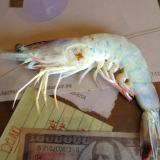
Shrimper George Barisich confirmed that information on where the shrimp could be found varies. He fishes the grounds off Plaquemines Parish, 140 north of Grand Isle.
“We’ve got areas that normally produce [shrimp] that haven’t produced since the spill,” said Barisich. But he reports that his shrimp haul is down 40 percent, compared to Martin’s 75 percent.
Nevertheless, Barisich said the spill has forever changed the landscape of fishing in the Gulf.
“If Mother Nature don’t fix it, BP is not going to fix it,” said Barisich. “And they’re not going to make it right as we’ve seen time and time and time again.”
This is the third in a series of articles Bellona is producing on the aftermath of the BP oil spill.

The Board of the Bellona Foundation has appointed former Minister of Climate and the Environment Sveinung Rotevatn as Managing Director of Bellona No...

Økokrim, Norway’s authority for investigating and prosecuting economic and environmental crime, has imposed a record fine on Equinor following a comp...

Our op-ed originally appeared in The Moscow Times. For more than three decades, Russia has been burdened with the remains of the Soviet ...

The United Nation’s COP30 global climate negotiations in Belém, Brazil ended this weekend with a watered-down resolution that failed to halt deforest...